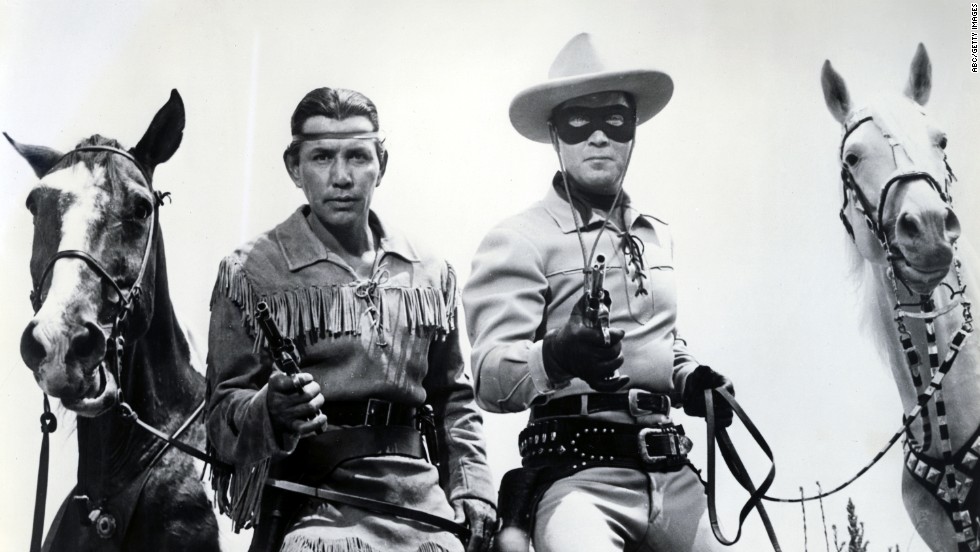Assignment 3:7 – Write a blog that hyper-links your research on the characters in GGRW according to the pages assigned to you. Be sure to make use of Jane Flicks’ GGRW reading notes on your reading list.
In “Coyote Pedagogy – Knowing Where the Borders Are in Thomas King’s Green Grass, Running Water,” Margery Fee and Jane Flick summarize the complexities of the novel when they deduce that “there is no reader of this novel, except perhaps Thomas King, who is not outside some of its networks of cultural knowledge” they go on to acknowledge that “every reader is also inside at least one network and can therefore work by analogy to cross borders into the others” (131). The beauty of King’s work is that he doesn’t answer questions, or give explanations, instead, he lays breadcrumbs throughout, compelling readers to continue and eventually find things out for themselves. I come to this book as a settler on Indigenous land; my background is European/Canadian and so my “basic general knowledge” covers primarily one of King’s “three distinct groups: Canadians, Americans, and Native North Americans” (Fee & Flick, 132). So, in this blog post, I’m exploring the allusions included on pages 1-3 and then 9-15 of Green Grass, Running Water (from here on referred to as GGRW) where we meet Coyote, Silly Dream, Dream Eyes, Dog Dream, that GOD, the Lone Ranger, Hawkeye, Ishmael, and Robinson Crusoe. King’s cyclical framework makes it difficult to definitively call this section “the beginning,” because it appears so often throughout the novel in different ways, but the first pages in this novel serve as an introduction to several important characters.
In the beginning…
Coyote: In my last blog post, I discussed coyote pedagogy, and part of my research for that involved learning about coyote as a symbol within Indigenous culture. I found Coyote’s introduction to be really in tune with their typically contradictory nature – that of the trickster who is both powerful and naive. Coyote states, “I am very smart” (2), tells the others that “Everything’s under control… Don’t panic” (2). From this snippet into his character, he appears initially as pretty authoritative (childlike, but with knowledge), and we see this contradicted later in the novel when his ignorance and naivety offers humour (for other characters and for readers).
I decided to view Silly Dream, Dream Eyes, that Coyote Dream and Dog Dream as characters because I wanted to discuss how even with something so seemingly simple naming characters, King resists categorization. Within many Indigenous cultures, dreams are interpreted and judged differently than in Western culture. Jean-Guy A. Goulet, in his article “Dreams and Visions in Indigenous Lifeworlds: An Experiential Approach” explains the difficulty in “contend[ing] with the fact that in these societies the distinctions familiar to the Western mind between the world of everyday life and the world of dreams are simply not drawn”; instead, ““the world of ghosts and spirits is as real as that of markets, though real in different qualitative ways” (173). He goes on to discuss the incompatibilities between Western culture’s “low tolerance of fantasies” and many Indigenous societies that find “well-developed traditions for inducing visions and/or lucid dreaming, traditions that are available to individuals as part of their social development” (173). When we read GGRW with an open mind, ready to cross borders and boundaries, we can more easily resist the urge to categorize and hierarchize what is and isn’t animate. Author Mel Y. Chen, in her book Animacies: Biopolitics, Racial Mattering, and Queer Affect draws the term animacy “from linguistics, where it refers to an entity’s degree of agency, awareness, sentience, liveliness, or mobility. Across languages, grammatical structures indicate speakers’ views about the animate and the inanimate. A simple example in English is the distinction between “he” or “she” and “it.” The latter is reserved for inanimate objects, so that calling a person “it” conspicuously performs his or her demotion on the animacy hierarchy” (Haynes).
“that Dog Dream has everything backward” (2)…
King’s humour and challenging of the Eurocentric status quo is evident from the first couple of pages. His allusion of that Dog Dream and that GOD to the Judeo-Christian version of God are powerful and illustrate right away that readers are going to have to suspend their preconceptions. We’ve discussed contradiction at length thus far in this course, and King artfully plays upon the dichotomy of Judeo-Christian vs Indigenous creation and faith.
The Lone Ranger, Hawkeye, Ishmael, and Robinson Crusoe

(Note: I’m going to refer to these characters using the he/him pronoun as they’re presented when they’re using these names for the purposes of this assignment)
At first glance, these four characters represent Western ideals – colonization and the dominance of whiteness. They are all juxtaposed with variations of “the faithful ‘Indian’ companion” (Flick, 142). The Lone Ranger has long been a household name for American and Canadian families – he represents the strong male, fighting for justice alongside Tonto. Then there’s Hawkeye, whose counterpart is Chingachgook, Robinson Crusoe and Friday, and Ishmael and Queequeg. Each of these four characters is taken from diverse, but acutely American, origins. Peter Gzowski’s interview with Thomas King beautifully highlights the complexity of these characters:
TK: Oh, the four old Indians, yeah—the Lone Ranger, Ishmael, Robinson Crusoe and—
PG: Hawkeye.
TK: Hawkeye, right. Well, I wanted to create archetypal Indian characters. I wanted to create the universe again, and those characters—
PG: Tom?
TK: Yes?
PJ: The Lone Ranger’s not an archetypal Indian character.
TK: Well, actually, he sort of is, in some kind of a strange way, within North American popular culture, you know, you’ve got the Lone Ranger and Tonto, and you’ve got Ishmael and Queequeg, and you have Hawkeye and Chingachgook, and you have Robinson Crusoe and Friday, and these are all kind of—they’re not archetypal characters in literature, but they’re Indian and white buddies, I suppose. They’re kind of, not buddy movies, but buddy books, I suppose. But those are just the names that the old Indians have at the time that we meet them. In actual fact, these are four archetypal Indian women who come right out of oral creation stories.
Works Cited
Britannica, The Editors of Encyclopaedia. “Lone Ranger.” Encyclopædia Britannica, Encyclopædia Britannica, Inc., 7 June 2015, www.britannica.com/topic/Lone-Ranger.
Flick, Jane. “Reading Notes for Thomas King’s Green Grass Running Water.” Canadian Literature 161-162. (1999). Web. Mar 07/2019.
Haynes, Melissa. “Intersectionality Matters.” Reviews In Cultural Theory, 1 Sept. 2013, reviewsinculture.com/2013/09/01/intersectionality-matters/.
“Ishmael & Queequeg’s Friendship in Moby-Dick.” Study.com, Study.com, study.com/academy/lesson/ishmael-queequegs-friendship-in-moby-dick.html.
King, Thomas. Green Grass, Running Water. Harper perennial Canada, 2007.
“More than Just a Trickster: The Many Faces of the Coyote.” Fractal Enlightenment, 18 Jan. 2018, fractalenlightenment.com/40732/culture/just-trickster-many-faces-coyote.
“A Quarterly of Criticism and Review.” Canadian Literature, canlit.ca/article/peter-gzowski-interviews-thomas-king-on-green-grass-running-water/.

Hi Kirsten,
Thanks for this great post, which, I think, engages very well with King’s starting the novel by yanking the proverbial rug out from under his readers in terms of the framework of sociopolitical expectations, and his teasing dismantling of the Judaeo-Christian creation stories. I’m curious as to what your take is on King’s reveal that the four Elders are ultimately female characters, despite their presenting as traditionally masculine – and the obvious intertexts of their hyper-masculine pop culture antecedents. Is it as simple as King’s project of ‘re-writing’ history and its entrenched ideological expectations throughout the novel being built on an established foundation of tweaking and toying with expectations (as you’ve ably explained here)? It seems to me that this blatant an inversion of stereotypical gender performance has to have a more poignant subtext imbued in it, but King, similarly, treats the ultimate gender identity of the four Elders as playfully nonchalant throughout, with most characters identifying them as men, and only Babo noticing them as female characters from the start. Do you think there is something to King’s aforementioned comment of ‘archetypal Indian Women’ at play – figures or archetypes from Indigenous tradition that he’s alluding to with this playful ‘shape-shifting’ conceit? I’d love to hear your thoughts, as well as why King is so understated about this throughout the novel.
Thanks for a great post!
Hi Kevin, thanks for your comment. You ask some tough questions! I think King is so playful and understated throughout with almost all of his references (some…many…. of which I missed entirely and then had a wild time reading our classmates’ blogs and rereading parts of the novel) that with the women vs. men for the Indians, he sticks with it. I found Babo a really interesting character, she deals with some pretty frustrating men throughout the novel (the police officers interrogating her and then offhandedly referring to her as “Aunt Jemima”, and then she puts up with a lot from the Doctor as well), so it’s interesting that she’s the only one that sees the Indians as female from the beginning (I wondered if it might be King’s way of almost putting two marginalized groups – Indians and Blacks – together in a show of solidarity).
I think King plays around with shapeshifting a lot throughout the novel, with the Indians but also with Coyote as well, and, though I don’t have a firm foundation in Indigenous archetypes and traditions, many of the stories I’ve read and heard really focus on how malleable people/animals/things are.
Hi Kirsten,
Great blog. I have always found it interesting how Ishmael is depicted in stories. Ishmael is a figure who is recognized in Judaism, Christianity but predominantly Islam since he is considered an ancestor to the prophet Muhammad. While Jane Flick’s reading notes make strong ties to him in the Bible, I think his Islam connection is overlooked. It got me thinking about all the Judeo-Christian allusions that King makes with the characters, however not much if any to the Quran and Islam in general. Do you think King and even Flick purposely leave Islamic connections out? Or do you think the book purposely highlights stronger Western ties from Judeo-Christian stories which people may be more aware of?
Hey Kynan, Thanks for your comment. I wonder if King used primarily Judeo-Christian allusions because that’s what he was/is most familiar with, and because in terms of settler-colonialism in Canada, it’s predominantly been more Indigenous ways of knowing vs. Judeo-Christian, rather than Islamic. I think it would be amazing to shift around the perspectives, or even re-write chunks of the book using Islamic connections as well (or instead) of the Judeo-Christian allusions – especially in today’s world, where we’re seeing so much Islamophobia.